Brett Seymour: Return to Antikythera
The 2,200-year-old Antikythera shipwreck was first discovered by Greek sponge divers in 1900. The site would eventually yield the most significant collection of Greek antiquities in history including bronze and marble statues, jewelry, furniture, luxury glassware, and the surprisingly complex Antikythera Mechanism. Diving was suspended on the 55-meter site after one diver died and two were paralyzed from the effects of decompression illness. Ever since, archaeologists and historians have speculated about what ancient treasures were left buried beneath the seafloor.
In the September of 2014 a team of international archaeologists and technical divers returned to the treacherous site for a project called “Return to Antikythera”. Using state-of-the-art technology they made a series of discoveries that prove much of the ship’s cargo is indeed still preserved beneath the sediment.
The shipwreck dates from 70 to 60 BC and is thought to have been carrying a luxury shipment of Greek riches from the coast of Asia Minor west to Rome. The team plans to return next year to excavate the site and recover more of the ship’s precious cargo on behalf of the Hellenic Ephorate of Underwater Antiquities.
As the Deputy Chief and Photographer for the National Park Service (NPS) Submerged Resources Center (SRC), Brett Seymour has been photographing the underwater world in America’s most captivating national parks for the past two decades. In addition to making a whole new dimension of the NPS available to the public, Brett specializes in documented historically significant shipwrecks and WWII relics around the world. To view more of Brett’s photographic work documenting the underwater world (among other expeditions), please visit his website.
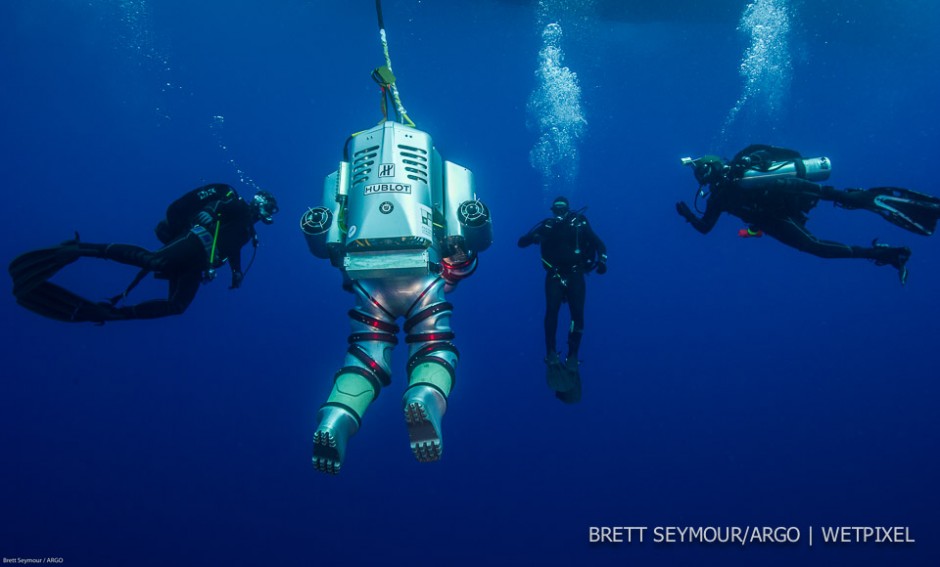
Safety divers from the Hellenic Navy swim with the Exosuit.
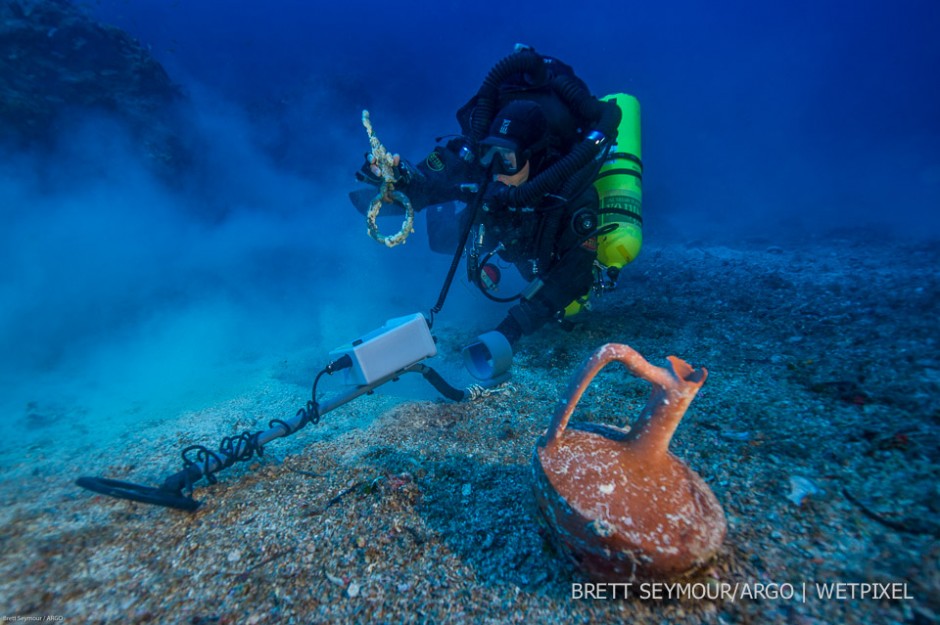
Greek technical diver Alexandros Sotiriou discovers an intact 'lagynos' ceramic table jug and a bronze rigging ring on the Antikythera Shipwreck.
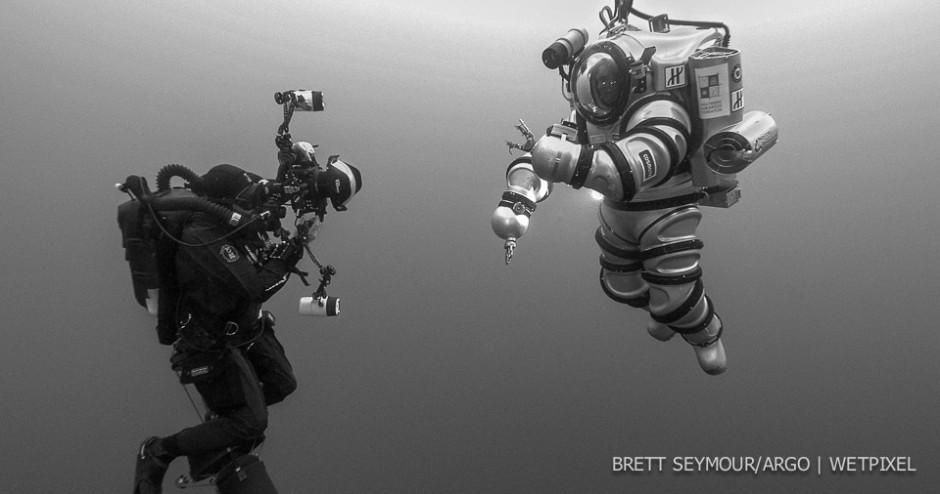
Photographer Brett Seymour shoots the Exosuit off the coast of Antikythera.
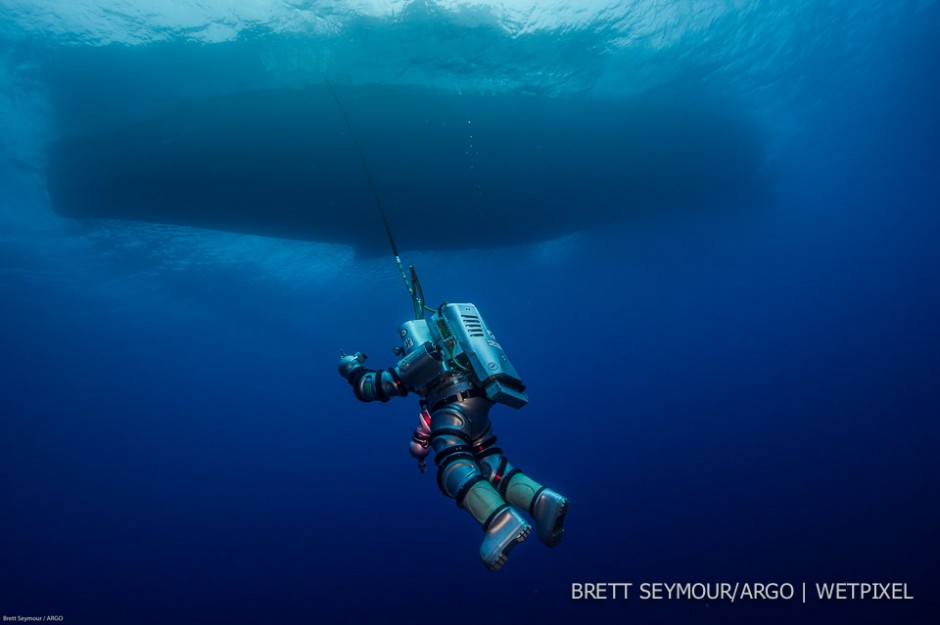
The Exosuit, a single person one atmosphere diving hard suit is suspended from the Hellenic Navy vessel HN THETIS.
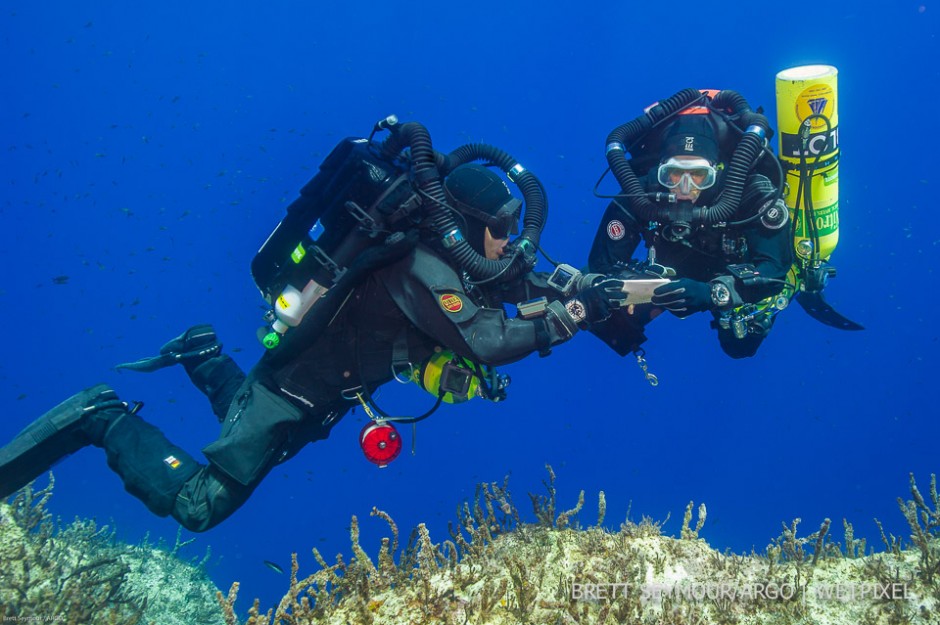
Technical divers Phil Short and Alexandros Sotiriou on deco at the end of a three hour dive
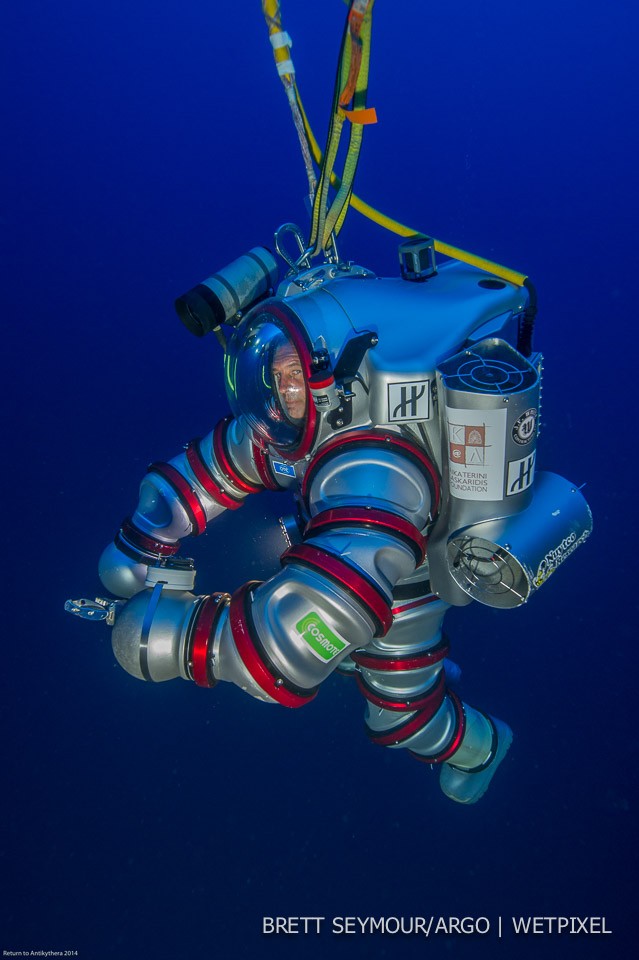
Woods Hole Oceanographic Institution Diving Safety Officer Ed O’Brian pilots the Exosuit at the Antikythera site.
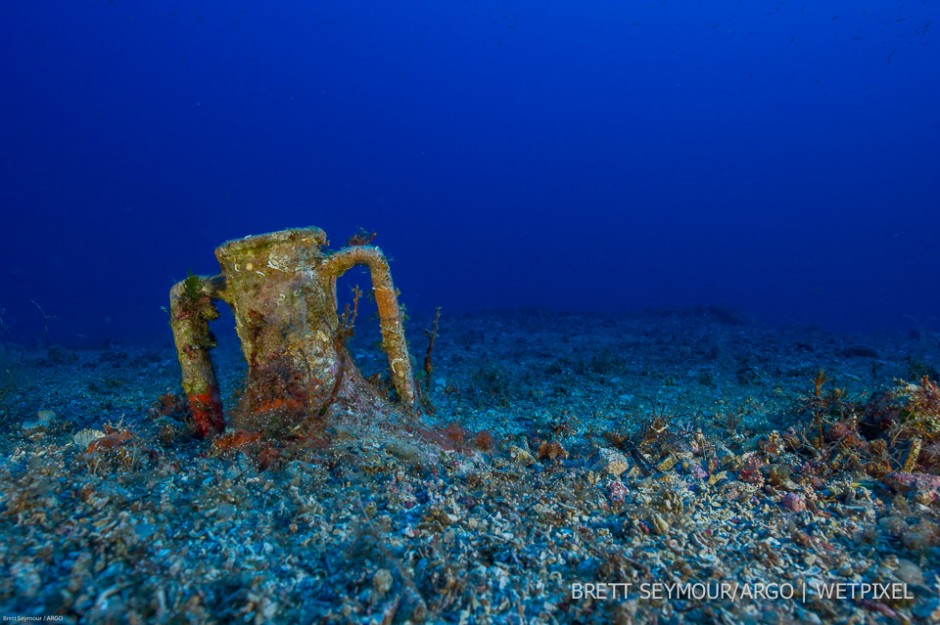
2,200 years under the sea- an intact amphora from the Antikythera shipwreck rest in the sediment.
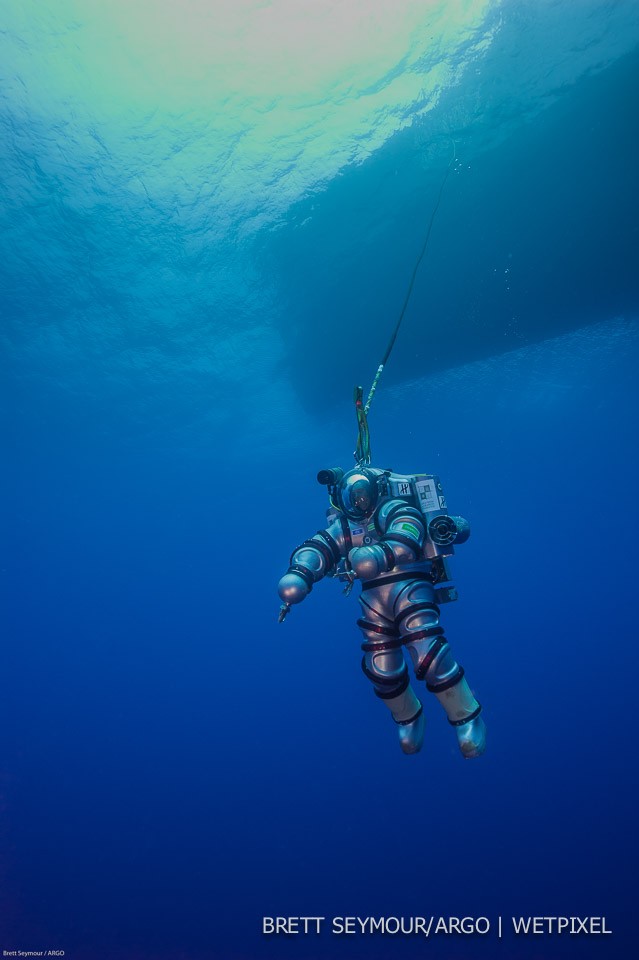
The Exosuit descends into the waters of Antikythera Greece.

Technical divers Phil Short and Alexandros Sotiriou examine the bronze spear while on decompression.

Members of the Hellenic Navy SEAL (O.Y.K.) team greet the Exosuit at Antikythera.
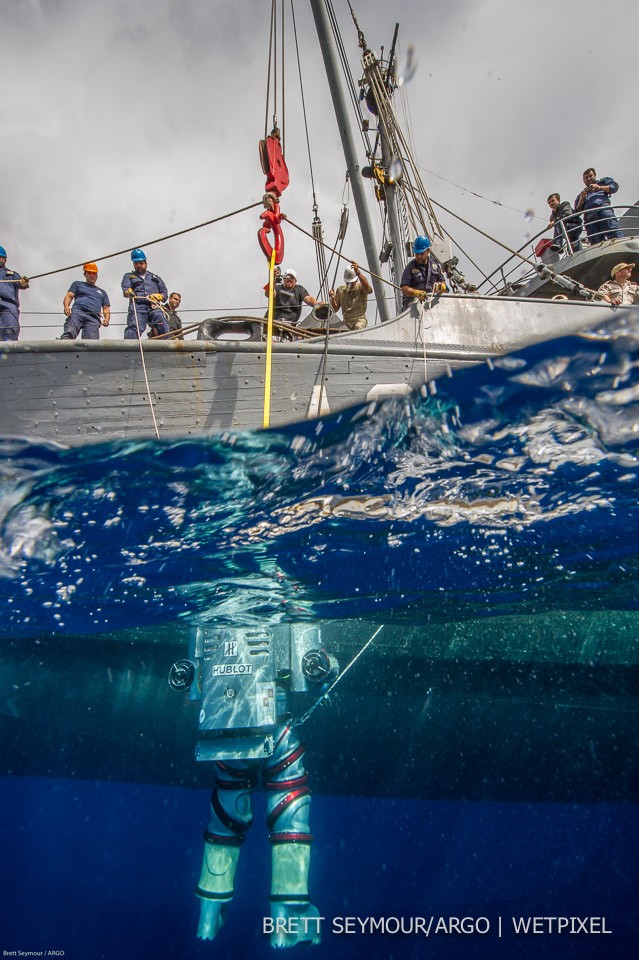
The Hellenic Navy and JF White project team recover Exosuit.
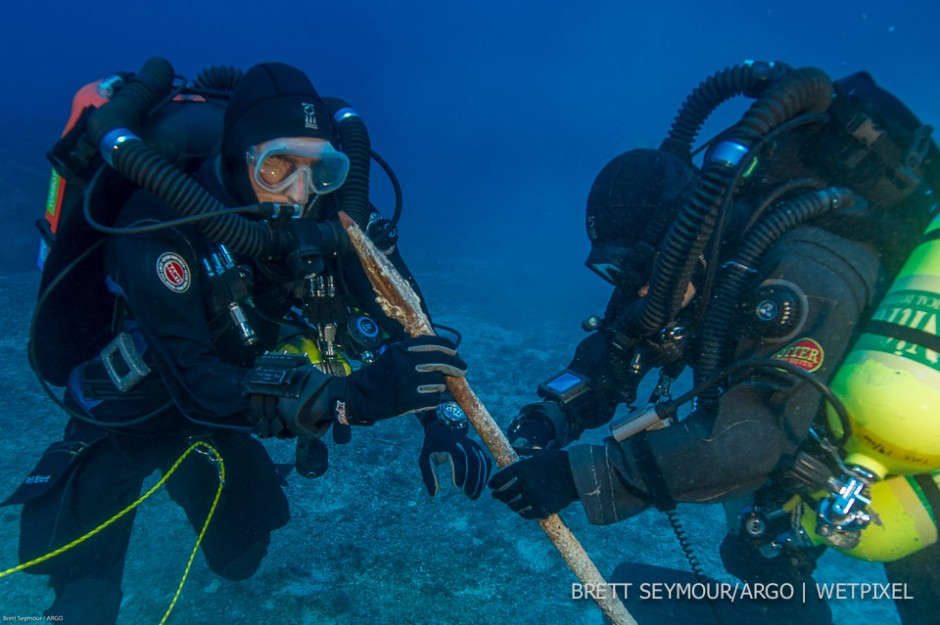
Technical divers Phil Short and Alexandros Sotiriou examine the bronze spear at 53 meters prior to recovery.
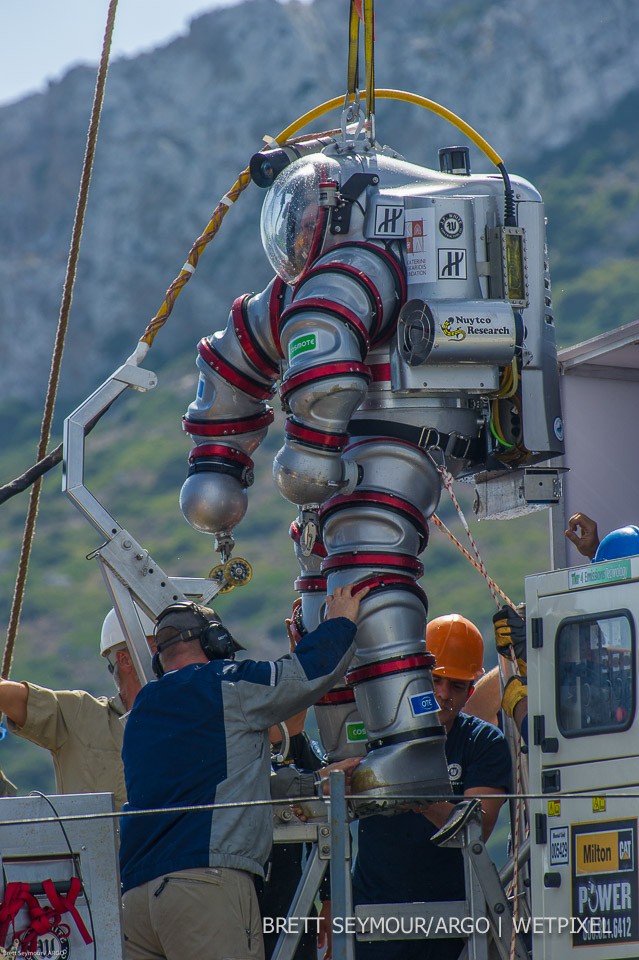
The Exosut is recovered and secured aboard the Hellenic Navy vessel HN THETIS
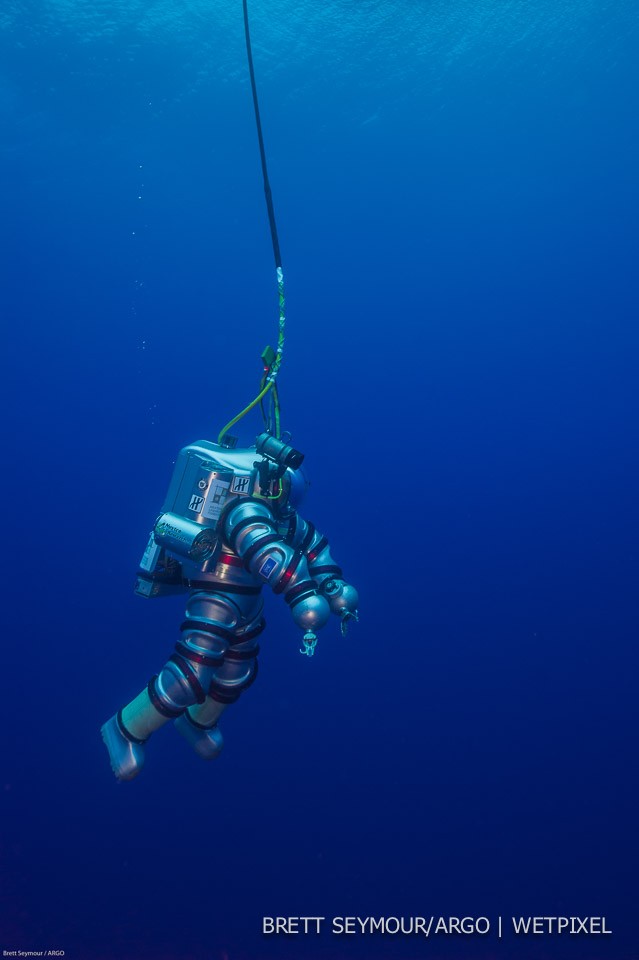
The Exosuit descends into the waters of Antikythera Greece.